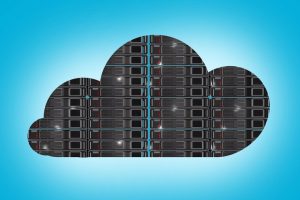Choose the Right VPS Configuration, A Guide
Choosing the Right VPS Configuration: A Comprehensive Guide
Virtual Private Servers (VPS) have become a cornerstone of modern web hosting, offering a powerful and flexible alternative to shared hosting and dedicated servers. Selecting the optimal VPS configuration, however, can be daunting. This guide will dissect the key elements – CPU, RAM, storage, bandwidth, and operating system – to empower you to make an informed decision tailored to your specific requirements and budget.
Understanding VPS Fundamentals
Before diving into specific configurations, it’s crucial to grasp what a VPS actually *is*. Unlike shared hosting where multiple websites share resources on a single server, a VPS utilizes virtualization technology to create isolated virtual environments on a physical server. Each VPS functions as an independent server with its own dedicated resources – CPU cores, RAM, storage, and operating system. This isolation provides greater stability, security, and control compared to shared hosting. However, it also means you’re responsible for more server management, though many providers offer managed VPS solutions to alleviate this burden.
The core benefit of a VPS lies in its scalability. As your website or application grows, you can easily upgrade your resources without the downtime associated with migrating to a new server. This flexibility makes VPS hosting ideal for businesses experiencing rapid growth, developers needing a testing environment, or anyone requiring more control and performance than shared hosting offers. It bridges the gap between the affordability of shared hosting and the power (and cost) of a dedicated server.
There are two primary types of VPS virtualization: KVM (Kernel-based Virtual Machine) and OpenVZ. KVM is generally considered superior, offering true virtualization with dedicated resources. Each VPS gets a guaranteed share of the physical server’s resources. OpenVZ, on the other hand, is container-based virtualization. While efficient, it shares the kernel with other VPS instances, potentially leading to performance fluctuations if another VPS is heavily utilizing the system. When choosing a provider, prioritize KVM virtualization for consistent performance and reliability.
Furthermore, understanding the difference between burstable and guaranteed resources is vital. Burstable resources allow you to temporarily exceed your allocated limits, drawing from available server capacity. This is useful for handling traffic spikes, but performance isn’t guaranteed during peak times. Guaranteed resources, as the name suggests, are always available to your VPS, ensuring consistent performance. For production environments, guaranteed resources are highly recommended, even if they come at a slightly higher cost.
CPU: The Brains of the Operation
The Central Processing Unit (CPU) is the engine that powers your VPS. Choosing the right CPU configuration depends heavily on the type of workload your VPS will handle. Here’s a breakdown:
- vCPU Count: This refers to the number of virtual CPU cores allocated to your VPS. More vCPUs generally translate to better performance, especially for CPU-intensive tasks.
- CPU Architecture: Modern VPS providers typically offer CPUs based on Intel Xeon or AMD EPYC processors. These server-grade processors are designed for reliability and performance. Pay attention to the generation of the processor (e.g., Intel Xeon E5-2680 v4 vs. Intel Xeon Gold 6248R). Newer generations offer significant performance improvements.
- CPU Frequency: Measured in GHz, CPU frequency indicates how quickly the processor can execute instructions. Higher frequency generally means faster performance, but it’s not the only factor.
Workload Considerations:
- Low-Traffic Websites (Blogs, Small Businesses): 1-2 vCPUs are usually sufficient.
- Medium-Traffic Websites (E-commerce, Forums): 2-4 vCPUs are recommended.
- High-Traffic Websites (Large E-commerce, Complex Applications): 4+ vCPUs are necessary.
- CPU-Intensive Tasks (Video Encoding, Data Processing): Prioritize a higher vCPU count and a newer CPU generation.
Don’t fall into the trap of simply choosing the highest vCPU count available. Over-provisioning can be wasteful and expensive. Consider your actual needs and monitor your CPU usage after launch to identify potential bottlenecks. Most VPS providers offer tools for monitoring resource utilization.
Furthermore, consider the CPU caching capabilities of the processor. Features like Intel’s Smart Cache or AMD’s 3D V-Cache can significantly improve performance for certain workloads by reducing latency and increasing data access speeds. This is particularly important for database-driven applications.
RAM: The Short-Term Memory
Random Access Memory (RAM) is your VPS’s short-term memory. It stores data that the CPU needs to access quickly. Insufficient RAM can lead to slow performance, frequent crashes, and a poor user experience. Like CPU, the amount of RAM you need depends on your workload.
- RAM Size: Measured in GB, RAM size determines how much data your VPS can hold in memory at any given time.
- RAM Type: DDR4 RAM is the current standard. DDR5 is emerging but is typically found on more expensive VPS plans.
- RAM Speed: Measured in MHz, RAM speed affects how quickly data can be transferred between the RAM and the CPU.
Workload Considerations:
- Low-Traffic Websites (Blogs, Small Businesses): 1-2 GB of RAM is often sufficient.
- Medium-Traffic Websites (E-commerce, Forums): 4-8 GB of RAM is recommended.
- High-Traffic Websites (Large E-commerce, Complex Applications): 8+ GB of RAM is necessary.
- Database Servers: Allocate sufficient RAM to accommodate the entire database in memory for optimal performance. This can range from 8 GB to 64 GB or more, depending on the database size.
- Caching: If you’re using caching mechanisms like Memcached or Redis, allocate additional RAM to accommodate the cache.
A key concept to understand is swap space. Swap space is a portion of your hard drive that the operating system uses as virtual RAM when physical RAM is full. While swap space can prevent crashes, it’s significantly slower than RAM. Relying heavily on swap space indicates that you need to upgrade your RAM. Ideally, you should have enough RAM to handle your peak workload without resorting to swap space.
Consider the operating system’s RAM requirements. Linux distributions generally require less RAM than Windows Server. Also, if you’re running a control panel like cPanel or Plesk, factor in its RAM usage.
Storage & Bandwidth: The Long-Term Memory and the Pipeline
Storage is your VPS’s long-term memory, where your files, databases, and operating system are stored. Bandwidth is the amount of data transferred between your VPS and the internet. Both are critical for performance and scalability.
Storage Options:
- SSD (Solid State Drive): SSDs are significantly faster than traditional HDDs (Hard Disk Drives). They offer faster boot times, quicker application loading, and improved overall performance. SSDs are the preferred choice for VPS hosting.
- NVMe SSD: NVMe SSDs are even faster than standard SSDs, utilizing the NVMe protocol for lower latency and higher throughput. They are ideal for demanding applications like databases and high-traffic websites.
- HDD (Hard Disk Drive): HDDs are the slowest and least expensive storage option. They are generally not recommended for VPS hosting unless you have very large storage requirements and performance is not a critical concern.
Storage Capacity: The amount of storage you need depends on the size of your website, the number of files you’ll be storing, and the size of your databases. Start with a reasonable amount of storage and upgrade as needed.
Bandwidth: Bandwidth is measured in GB (Gigabytes) per month. It represents the total amount of data that can be transferred between your VPS and the internet. Consider your website’s traffic and the size of the files your visitors will be downloading.
Workload Considerations:
- Low-Traffic Websites: 20-50 GB of bandwidth may be sufficient.
- Medium-Traffic Websites: 50-100 GB of bandwidth is recommended.
- High-Traffic Websites: 100+ GB of bandwidth is necessary.
- Streaming Media: Requires significant bandwidth.
Many VPS providers offer unmetered bandwidth, which means you’re not charged based on the amount of data transferred. However, unmetered bandwidth often comes with acceptable use policies, so be sure to read the fine print. Also, consider the network speed of the VPS provider. A fast network connection is essential for delivering content quickly to your visitors.
Operating System & Management
The choice of operating system (OS) is crucial. Linux distributions (Ubuntu, CentOS, Debian) are the most popular choice for VPS hosting due to their stability, security, and cost-effectiveness. Windows Server is an option if your application requires it (e.g., ASP.NET applications).
Consider your technical expertise when choosing between managed and unmanaged VPS hosting.
- Managed VPS: The provider handles server administration tasks like security updates, backups, and monitoring. This is a good option for users who lack technical expertise.
- Unmanaged VPS: You are responsible for all server administration tasks. This gives you more control but requires more technical knowledge.
Finally, ensure the VPS provider offers a robust control panel (e.g., cPanel, Plesk) to simplify server management. A user-friendly control panel can save you a significant amount of time and effort.
In essence, selecting the right VPS configuration is a balancing act. It requires a thorough understanding of your application’s resource requirements, your technical skills, and your budget. By carefully considering the factors outlined in this guide – CPU, RAM, storage, bandwidth, and operating system – you can choose a VPS configuration that empowers your online presence and sets you up for success. Don’t hesitate to start small and scale up as your needs evolve, and always prioritize providers offering reliable infrastructure and excellent support to ensure a smooth and productive experience.












